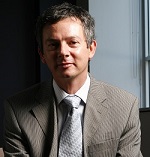Up until now, most of the work focused on the amyloid beta theory on Alzheimer's has concentrated on drugs that can clear the toxic protein clusters many believe trigger brain damage and memory loss. But a team in Australia has been winning headlines around the world after demonstrating in mice that they can do the same thing with an ultrasound approach.
The technology is presented as a simple combination of ultrasound and microbubbles that temporarily open up the blood-brain barrier and essentially use oscillating ultrasound waves to spur microglial cells that can digest amyloid beta and remove them from the brain. And it worked without any of the potential toxicity or complicating factors of a therapeutic, with the mice in the study demonstrating improvements in memory.
As is often the case in animal research and Alzheimer's, the scientists at the University of Queensland in Australia heralded the work in mouse models of the disease as a clear breakthrough that could prove a game changer in treating a disease that afflicts millions of people around the world.
 |
| Professor Jürgen Götz |
"We're extremely excited by this innovation of treating Alzheimer's without using drug therapeutics," Professor Jürgen Götz said. "The word 'breakthrough' is often misused, but in this case I think this really does fundamentally change our understanding of how to treat this disease, and I foresee a great future for this approach."
Mice, though, have often proved to be an unreliable preclinical model, demonstrating improvements in cognition that don't translate into humans at all. And it should be noted that there's no clear consensus in what causes Alzheimer's, though there are a number of clinical studies underway now that focus on antibodies and other therapies that have shown some promising in clearing amyloid beta.
Findings of the research, "Scanning ultrasound efficiently removes amyloid-β and restores memory in an Alzheimer's model," are published in the journal Science Translational Medicine.
- here's the release
- here's the abstract